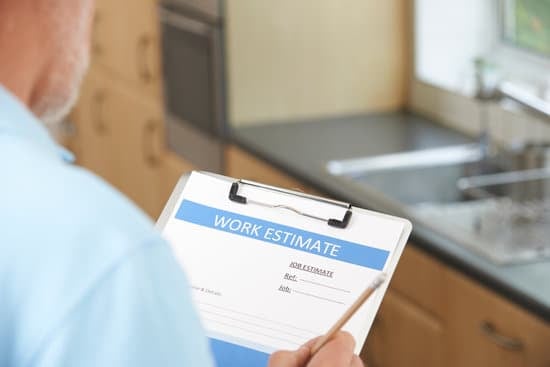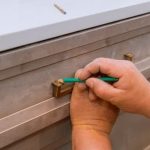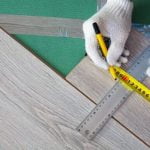The challenges of poor mobile signal at home in the UK are a pervasive and frustrating issue faced by many residents. Weak mobile signals can lead to dropped calls, slow internet speeds, and difficulty accessing essential services on our smartphones. In fact, statistics show that a significant portion of the UK population experiences poor signal strength in their homes.
This article aims to address the common issues faced by UK residents regarding weak mobile signals at home. We will explore the factors that contribute to this problem, including building materials, distance from cell towers, and environmental factors. Additionally, we will discuss the unique challenges faced by residents in the UK due to factors like rural locations, dense urban areas, and interference from historical structures.
The negative impacts of weak mobile signals extend beyond inconvenience; they can disrupt daily life and hinder productivity. From missed important calls to slow-loading web pages, these issues can cause frustration and inefficiency. However, there is hope.
By understanding the causes of poor signal strength and implementing simple solutions, you can significantly improve your mobile signal at home in the UK. In the following sections of this article, we will provide you with practical tips on how to conduct a signal strength analysis at home and offer both easy fixes and technological solutions for boosting your mobile signal.
Be sure to stay tuned for valuable insights on engaging with mobile network providers and alternative communication options during poor signal situations.
Stay connected as we delve into a comprehensive guide on improving your mobile signal at home in the UK – because staying productive starts with a reliable connection.
Understanding the Factors Affecting Mobile Signal Strength in the UK
In order to effectively improve mobile signal at home in the UK, it is important to have a thorough understanding of the factors that contribute to weak signal strength. There are several key factors that can significantly impact mobile signal quality, and being aware of these factors can help individuals determine the most appropriate solutions for their specific situations.
One crucial factor that affects mobile signal strength is building materials. The construction materials used in homes can significantly attenuate or block signals from reaching inside the premises. For example, thick concrete walls and metal roofs can create obstacles for mobile signals, resulting in weaker reception. Additionally, glass windows with metallic coatings designed to reduce heat can also interfere with mobile signals.
Another factor to consider is the distance from cell towers. The closer a home is located to a cell tower, the stronger the signal strength is likely to be. However, many residents in rural areas or remote locations may face challenges due to being far away from cell towers. On the other hand, residents in densely populated urban areas might experience weaker signals due to greater congestion and competition for limited network resources.
Environmental factors also play a role in affecting mobile signal strength. Trees, hills, and other geographical features can obstruct and scatter signals, leading to diminished coverage and weaker reception. Weather conditions such as heavy rain or fog can also impact signal strength temporarily.
These factors highlight some of the unique challenges faced by individuals living in different parts of the UK. Rural areas might struggle with limited network coverage and long distances from cell towers, while urban areas face congestion issues and interference caused by historical structures or densely populated neighborhoods.
Understanding these factors allows individuals to make informed decisions when it comes to improving their mobile signal at home. By identifying which specific factors are affecting their signal strength, residents can choose appropriate solutions that best address their particular situation.
| Factors | Impact on Mobile Signal Strength |
|---|---|
| Building materials | Thick concrete walls and metal roofs can block or attenuate signals, leading to weaker reception. |
| Distance from cell towers | The closer a home is to a cell tower, the stronger the signal strength will likely be. Rural areas may face challenges due to being far away from cell towers while urban areas may experience congestion issues. |
| Environmental factors | Trees, hills, and weather conditions can obstruct or scatter signals, resulting in diminished coverage and weaker reception. |
Conducting a Signal Strength Analysis at Home
When facing poor mobile signal at home in the UK, it is important to conduct a thorough signal strength analysis to understand the extent of the issue. By assessing the current mobile signal strength, you can determine the most effective solutions for improving connectivity. Here is a step-by-step guide on how to conduct a signal strength analysis at home:
- Use Smartphone Apps: There are several smartphone apps available that can help measure and analyze mobile signal strength. These apps provide real-time information about signal quality, including signal bars, dBm (decibel milliwatts), and SINR (Signal-to-Interference plus Noise Ratio). They also allow you to compare your signal strength with others in your area.
- Network Coverage Maps: Many mobile network providers offer online coverage maps that show the expected level of signal strength in different areas. These maps are a valuable resource for determining if weak signals are specific to your location or if they are widespread in your area.
- Conduct Physical Observations: Walk around your home and take note of areas with weak or no signal. Factors such as distance from windows or outside walls can affect the availability of mobile signals indoors. Additionally, consider any areas where reception improves significantly or where interference may be causing issues.
Once you have completed your analysis, you will have a better understanding of the scope and severity of your mobile signal problems at home. This knowledge will guide you in selecting appropriate solutions based on your specific situation.
To effectively improve mobile signal at home in the UK, there are several simple solutions that you can try:
- Reposition Devices: Sometimes simply moving your device closer to a window or higher up in your home can improve signal reception.
- Use Signal Boosters: Signal boosters amplify and enhance existing signals, helping to improve coverage throughout your home.
- Install External Antennas: Installing external antennas on your property can help capture stronger signals from nearby cell towers.
- Utilize Wi-Fi Calling: Many smartphones now offer Wi-Fi calling options, allowing you to make and receive calls over a stable Wi-Fi connection instead of relying on cellular signal.
By conducting a signal strength analysis and implementing these simple solutions, you can significantly improve the mobile signal at home in the UK and enhance your overall connectivity experience.
Simple Solutions for Improving Mobile Signal at Home
Repositioning Devices
One simple solution for improving mobile signal at home is to reposition devices such as smartphones or tablets. Sometimes, weak signal strength can be attributed to the physical location of these devices within your home. To determine the best placement, it may be helpful to walk around different areas of your home while monitoring the signal strength on your device. Look for spots with stronger signals and consider keeping your device in those areas.
Using Signal Boosters
Another effective and cost-effective way to enhance mobile signal at home is by using signal boosters. Signal boosters, also known as cell phone repeaters or signal amplifiers, work by capturing existing cellular signals outside your home, amplifying them, and then rebroadcasting them inside. This can significantly improve the coverage and signal strength within your home. Signal boosters are available for purchase online or through various retailers and are relatively easy to install.
Installing External Antennas
For those willing to make a more permanent investment, installing external antennas can be a great solution to improve mobile signal at home. Depending on your location, you may have the option of installing an outdoor antenna on your roof or in another high point on your property.
These antennas can capture stronger signals from nearby cell towers and provide enhanced coverage throughout your home. It’s important to research and choose an antenna that is compatible with your specific network provider and follow any installation guidelines provided.
By implementing these simple solutions such as repositioning devices, using signal boosters, or installing external antennas, individuals can improve their mobile signal at home without investing large amounts of time or money into advanced technological solutions. It’s important to note that the effectiveness of these solutions may vary depending on factors such as geographical location and network provider coverage in the area.
However, many individuals have successfully improved their mobile signals using these methods, resulting in better connectivity and a more seamless mobile experience at home.
Technological Solutions for Boosting Mobile Signal
In order to enhance mobile signal at home in the UK, there are several technological solutions available in the market that can significantly boost signal strength. These solutions go beyond simple repositioning of devices or using signal boosters, and offer more advanced methods for improving mobile connectivity.
One such solution is a femtocell, which is a small device that acts as a mini cell tower in your home. It connects to your internet network and creates a localized cellular signal, providing improved coverage within its range. Femtocells are particularly useful for areas with weak outdoor cell signals but strong broadband internet connections.
Another option is a signal repeater, also known as a cellular repeater or amplifier. This device captures the existing weak signal from outside your home, amplifies it, and rebroadcasts it within the building. Signal repeaters are effective in boosting both voice and data signals, making them ideal for areas with poor coverage.
Distributed Antenna Systems (DAS) are more suitable for larger buildings or spaces with multiple floors. They consist of several antennas strategically placed throughout the area to evenly distribute amplified signals. DAS can cover large indoor areas like shopping malls, stadiums, or office buildings, ensuring reliable mobile connectivity throughout.
While these technological solutions can greatly improve mobile signal at home in the UK, it’s important to note their limitations and potential costs. Some factors that may affect the effectiveness of these solutions include the layout of your home, local regulations and restrictions, and compatibility with your specific mobile network provider. Additionally, these technologies come with different price tags depending on their capabilities and complexity.
By exploring these advanced technological solutions and considering their benefits and limitations based on individual needs and circumstances, residents in the UK can significantly enhance their mobile signal strength at home. It’s recommended to consult with professionals or experts in the field before investing in any particular solution to ensure optimal results and value for money.
Engaging with Mobile Network Providers
When experiencing poor mobile signal at home in the UK, it is important to engage with your mobile network provider to seek solutions. By contacting and communicating with them, you can report signal issues and explore potential improvements. Here is a step-by-step guide on how to effectively engage with mobile network providers.
- Determine the specific issue: Before reaching out to your mobile network provider, it is helpful to identify the specific problem you are facing. Is the weak signal present across all networks or just one? Is it affecting calls, texts, or data? Understanding the nature of the issue will allow you to provide clearer information when engaging with your provider.
- Contact customer support: Start by visiting your mobile network provider’s website or calling their customer support hotline. During this initial conversation, explain the issues you are facing with your mobile signal at home. You may be asked for additional details such as your address and postcode for troubleshooting purposes.
- Ask about network upgrades and maintenance: Enquire about any planned upgrades or maintenance work that may affect signal quality in your area. This could include new cell towers being installed or existing ones being upgraded. Understanding these plans can help determine if there are future improvements on the horizon.
- Explore coverage expansion options: Inquire about potential coverage expansions in your area. Mobile network providers are constantly working on extending their coverage areas to reach more customers. By expressing interest in improved coverage, you might encourage them to prioritize investment in infrastructure improvements.
- Keep records of interactions: It is essential to keep records of your interactions with your mobile network provider, such as dates and times of conversations and names of individuals spoken to. This documentation can serve as evidence if further action is needed.
By engaging with your mobile network provider proactively and providing accurate information about the issues you face with weak mobile signal at home, you increase the chances of finding a suitable solution that improves connectivity and ensures a more reliable mobile signal experience in the UK.
Alternative Communication Options During Poor Signal Situations
In today’s highly connected world, poor mobile signal can be frustrating and disruptive. However, there are alternative communication options available for situations when you are faced with extremely poor or no mobile signal at home in the UK. These alternatives can help you stay connected and maintain communication with others, even when your mobile signal is weak.
Using Landline Connections
One of the simplest and most reliable alternatives to mobile communication during poor signal situations is using a landline connection. While many people have transitioned to primarily using their mobile phones for calls, having a landline connection as a backup can prove invaluable when faced with weak or no mobile signal. Landlines typically have more stable connections and can provide clearer audio quality compared to mobile calls.
Exploring VoIP Services
Voice over Internet Protocol (VoIP) services offer an alternative means of making voice calls over the internet instead of through traditional phone lines. There are various VoIP apps and services available that allow users to make voice calls, video calls, and send messages using an internet connection. Some popular examples include Skype, WhatsApp, and FaceTime. Using these services requires an active internet connection, whether it’s through Wi-Fi or a wired Ethernet connection.
Messaging Apps
Messaging apps can be another useful alternative when faced with poor mobile signal situations. These apps rely on data connections rather than relying on traditional voice or SMS networks. Some popular messaging apps include WhatsApp, Facebook Messenger, and Telegram. They offer features such as text messaging, voice memos, photo sharing, and even video calling – all while utilizing an active internet connection.
While these alternative communication options during poor signal situations provide valuable alternatives to traditional mobile calls and messaging, it’s important to keep in mind that they all require some form of stable internet connection. It’s therefore recommended to have access to a reliable Wi-Fi network or consider alternative internet solutions such as satellite or broadband connections to ensure uninterrupted communication during weak mobile signal scenarios.
Future Prospects and Developments in Mobile Signal Technology in the UK
In recent years, the demand for reliable and fast mobile signal has increased significantly in the UK. With advancements in technology and the growing need for seamless connectivity, mobile network providers are continuously working towards improving mobile signal strength across the country. In this section, we will explore the future prospects and developments in mobile signal technology that are expected to have a significant impact on signal quality and overall mobile connectivity in the UK.
One of the most anticipated developments in mobile signal technology is the rollout of 5G networks. 5G promises faster speeds, lower latency, and greater capacity, which will greatly enhance the mobile experience for users.
The UK government has set ambitious goals to ensure nationwide coverage of 5G by 2027, with major cities already witnessing its implementation. This new generation of network technology not only brings faster internet browsing and streaming but also enables emerging technologies like Internet of Things (IoT) devices and autonomous vehicles.
Another development that holds great potential for improving mobile signals is small cell deployments. Small cells are low-powered cellular base stations that can be strategically placed to fill gaps in coverage or enhance capacity in high-traffic areas. These compact devices help alleviate congestion on existing macrocell towers and provide localized signal boost without requiring extensive infrastructure changes. This technology is especially beneficial for dense urban areas where traditional base stations may struggle to provide adequate coverage.
Additionally, satellite-based solutions are being explored as an alternative to traditional terrestrial networks for extending connectivity to remote or rural areas where providing sufficient coverage through traditional means might be challenging. Companies like SpaceX have launched constellations of low-Earth orbit (LEO) satellites that aim to eliminate coverage gaps even in hard-to-reach locations. While these satellite-based solutions hold promise, their success will depend on factors like cost-effectiveness, scalability, and regulatory frameworks.
Conclusion
In conclusion, improving mobile signal at home in the UK is a pressing issue that affects countless residents across the country. The challenges of weak mobile signals can have a significant impact on daily life and productivity, leading to frustration and inconvenience. However, there are practical solutions available that can help improve signal strength and enhance connectivity.
Understanding the factors affecting mobile signal strength is crucial in finding effective solutions. Factors such as building materials, distance from cell towers, and environmental interferences play a role in weakening signal quality. Conducting a thorough analysis of signal strength at home is the first step to identifying these factors and determining the most suitable solution.
Fortunately, there are both simple and technological solutions available to improve mobile signal at home. Repositioning devices, using signal boosters, installing external antennas, and utilizing Wi-Fi calling options are cost-effective ways to enhance signal strength. For those seeking more advanced options, technologies like femtocells, signal repeaters, and Distributed Antenna Systems (DAS) provide more comprehensive coverage but may come with limitations and costs to consider.
Engaging with mobile network providers is also an essential step in addressing poor signal issues. By reporting problems and exploring potential solutions with providers, individuals can gain valuable insights into network upgrades, coverage expansions, and planned maintenance activities that could improve their overall signal quality.
Ultimately, staying connected leads to increased productivity and convenience in today’s digital era. It is important for readers to take action based on their specific situations by implementing the suggested solutions discussed throughout this article. With ongoing advancements in technology like 5G networks and satellite-based solutions on the horizon, there are promising prospects for improved mobile signal strength that will further enhance connectivity throughout the UK.
Frequently Asked Questions
Is it possible to boost mobile phone signal?
It is indeed possible to boost mobile phone signal in various ways. One option is to use a signal booster, which consists of an external antenna that captures the weak outside signal and amplifies it before transmitting it inside your house. This can significantly improve your reception, especially if you live in an area with poor coverage.
Another solution is to switch to a network provider that offers better coverage in your specific location. Different providers have different network strengths, so researching and choosing one that performs well in your area can lead to improved signal quality.
Why is my mobile signal so bad in my house?
There are several reasons why you may experience a bad mobile signal in your house. One common factor is the construction and layout of the building itself, which can interfere with the radio waves used by mobile networks.
Materials such as concrete or metal can weaken or block mobile signals, resulting in poor reception indoors. Additionally, factors like distance from cell towers, geographical features like hills or valleys, and even environmental conditions like foliage or weather can all contribute to a weaker signal within your home.
How do I get better cell reception in my house?
To get better cell reception in your house, there are several things you can try. Relocating closer to windows or going upstairs where the signal may be stronger could make a noticeable difference. Additionally, keeping large obstructions such as furniture or appliances away from areas where you typically use your phone can help reduce interference and improve reception levels.
If these steps don’t yield satisfactory results, consider using a Wi-Fi calling feature if available on your phone model – this allows you to make calls using a Wi-Fi connection rather than relying solely on cellular signals. Alternatively, investing in a signal booster specifically designed for home use can provide more consistent and reliable coverage throughout various areas of your residence.

I’m thrilled to have you here as a part of the Remodeling Top community. This is where my journey as an architect and remodeling enthusiast intersects with your passion for transforming houses into dream homes.





